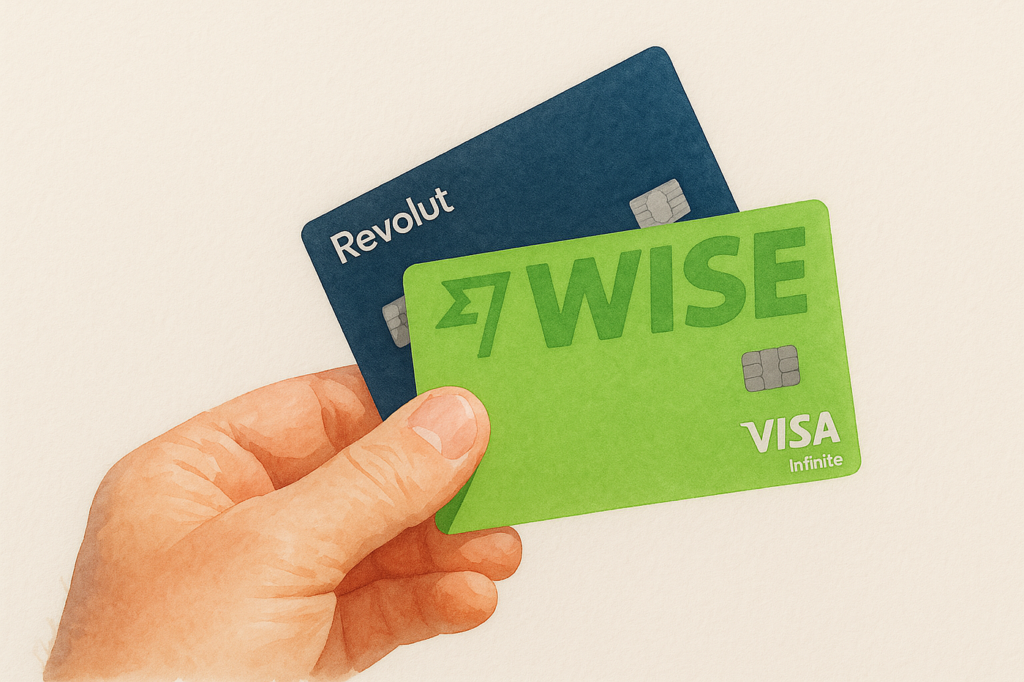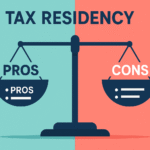Planning a trip to the vibrant and utterly captivating nation of Brazil? From the pulsating rhythms of Carnival in Rio de Janeiro to the awe-inspiring power of Iguazu Falls and the untamed wilderness of the Amazon rainforest, Brazil promises an adventure unlike any other.
But amidst the excitement of planning your itinerary and packing your bags, a crucial question arises: how will you manage your money? Navigating foreign currencies and payment methods can be daunting, but getting it right is key to a smooth, stress-free journey. In recent years, travel money cards, particularly those offered by fintech giants such as Revolut and Wise (formerly TransferWise), have gained significant popularity among international travelers. These cards often promise better exchange rates, lower fees, and greater convenience than traditional banking options. But are they truly the best bet for your Brazilian escapade in 2025?
This in-depth guide aims to answer that very question. We’ll delve into the nitty-gritty of using travel money cards in Brazil, specifically focusing on options available to tourists from the US, Europe, Canada, and Australia.
We’ll explore their pros and cons, dissect the fee structures, examine their acceptance across the country, and provide practical, actionable tips to help you make an informed decision. We’ll also touch upon the unique Brazilian financial landscape, including the ubiquitous Pix payment system, to give you a complete picture.
What Exactly Are Travel Money Cards?
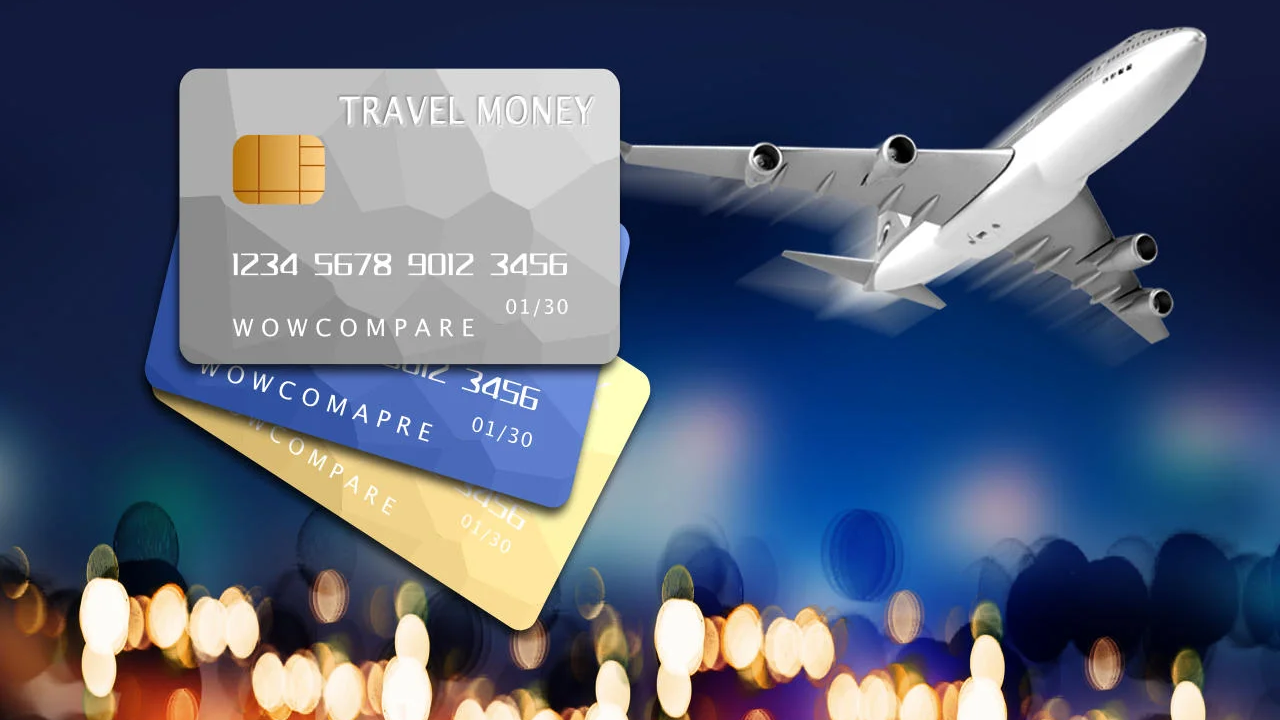
Before we dive into the specifics of using them in Brazil, let’s quickly clarify what we mean by “travel money cards.” Essentially, these are debit cards (though sometimes processed as credit cards abroad) designed specifically for travelers. Companies like Revolut and Wise have revolutionized this space by offering multi-currency accounts that you can manage through a smartphone app. The core idea is to provide a more flexible and often cheaper way to spend money in foreign currencies compared to traditional bank debit or credit cards.
Key features typically include the ability to hold and exchange multiple currencies within the app, often at or near the mid-market exchange rate (the rate banks use to trade currencies between themselves). This can translate into significant savings on conversion fees. Many of these cards also offer a certain number of free ATM withdrawals abroad per month and provide instant spending notifications and security features like freezing your card directly from the app. For the international traveler, the main appeal lies in the potential for cost savings on foreign transaction fees and currency conversion, coupled with the convenience of managing finances on the go. They aim to take the sting out of international spending, making your travel budget stretch further.
The Big Question: How Well Do Revolut and Wise Work in Brazil?
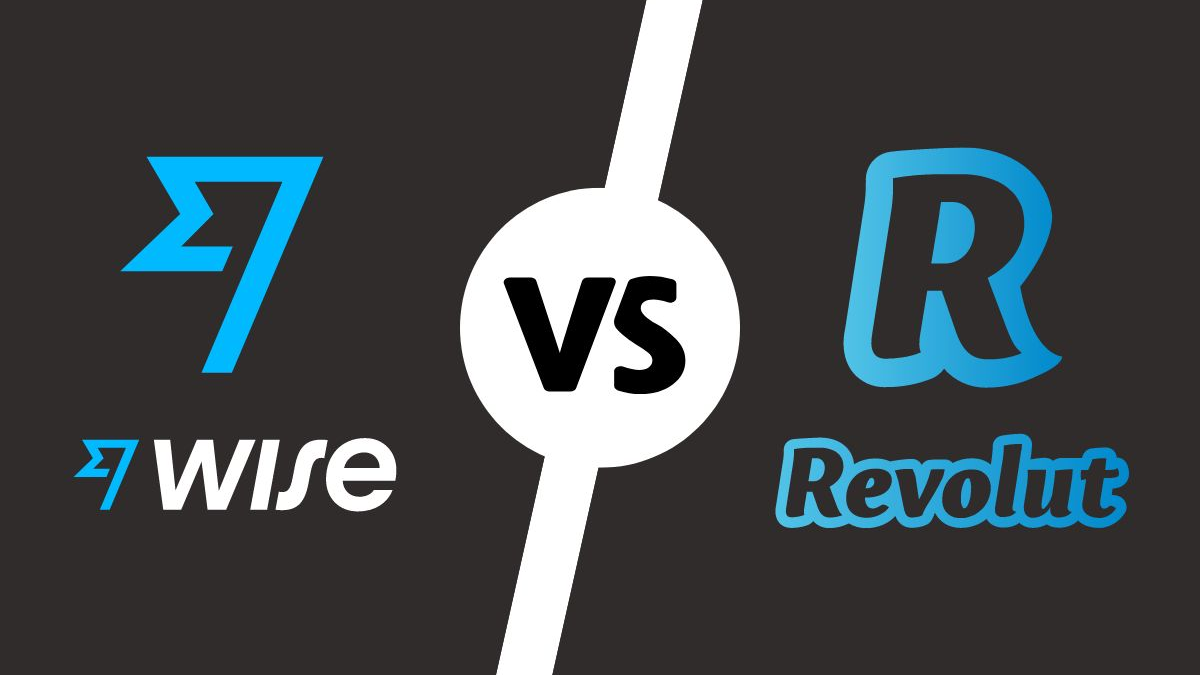
Now, let’s get to the heart of the matter: how practical and effective are travel money cards like Revolut and Wise for a trip to Brazil? The answer, like many things in travel, has nuances, but generally, they can be very useful tools if you understand how to use them correctly within the Brazilian context.
A. Card Acceptance (The Visa/Mastercard Backbone)
The good news is that both Revolut and Wise typically issue cards that run on the Visa or Mastercard networks. These two networks are widely accepted across Brazil, especially in cities, tourist destinations, and larger establishments like hotels, restaurants, and supermarkets. You’ll find card machines almost everywhere. So, in terms of basic acceptance for payments, you should generally be fine.
An important tip for using these cards in Brazil: when asked by a vendor whether your card is “débito ou crédito?” (debit or credit?), it’s often best to say “crédito“. Even though your Revolut or Wise card is a debit card linked to your pre-loaded funds, the payment processing systems in Brazil frequently handle foreign cards of this type as credit transactions. Choosing “débito” might sometimes lead to a declined transaction. This is a common quirk experienced by many international travelers.
B. ATM Withdrawals in Brazil
Accessing cash is often necessary for smaller purchases, local markets, or in more remote areas. ATMs (caixas eletrônicos) are readily available in Brazilian cities and towns. Major networks include Banco24Horas (a large interbank network), Bradesco, Itaú, Santander, and Banco do Brasil. You should be able to withdraw Brazilian Reais (BRL) using your Revolut or Wise card at most of these, provided they display the Visa or Mastercard logo.
However, there are a few things to keep in mind regarding ATM withdrawals:
- Withdrawal Limits: Brazilian ATMs often have their own per-transaction withdrawal limits, typically ranging from R$700 to R$2,500 (approximately USD $130-$470 / EUR €120-€430 / GBP £100-£370 / CAD $180-$640 / AUD $200-$700, as of mid-2024, but always check current rates). These limits are in addition to any daily or monthly withdrawal limits imposed by Revolut or Wise on your specific account plan.
- Local ATM Fees: While Revolut and Wise might offer a certain number of free ATM withdrawals per month, the Brazilian bank operating the ATM may still charge its own fee (tarifa de saque). These fees can vary, with some ATMs being free (though rarer) and others charging around R$20-R$30 (approx. USD $3.75-$5.60) per transaction. It’s wise to withdraw larger amounts less frequently to minimize these local fees, if they apply.
- Dynamic Currency Conversion (DCC): This is a crucial point. When using an ATM, you might be asked if you want the transaction to be processed in your home currency (e.g., USD, EUR, GBP) or in the local currency (BRL). **Always choose to be charged in the local currency (BRL)**. If you select your home currency, the ATM will use Dynamic Currency Conversion (DCC), which often involves a less favorable exchange rate and hidden markups, making the withdrawal more expensive. Let your card provider (Revolut/Wise) handle the conversion; they generally offer better rates.
C. User Experiences & Potential Issues
Many travelers report positive experiences using Revolut and Wise in Brazil, citing the ease of use, good exchange rates, and helpful app features. However, some potential issues to be aware of include:
- Connectivity: Since these cards are heavily reliant on their companion apps for management (topping up, checking balances, freezing the card), reliable internet access is important. While Wi-Fi is common in hotels and cafes in urban areas, it can be patchy or unavailable in more remote regions of Brazil. Consider downloading any necessary information or pre-loading sufficient funds if you’re for a region with bad connection.
- Occasional Acceptance Hiccups: While generally good, there might be rare instances where a smaller vendor’s card machine might struggle with a foreign card. It’s always a good idea to carry a small amount of cash as a backup.
- Understanding Fees: It’s vital to understand the specific fee structure of your Revolut or Wise plan before you travel, especially regarding ATM withdrawal limits, currency exchange fair-usage limits, and any potential weekend markups on exchange rates (some providers add a small percentage on weekends when forex markets are closed).
Deep Dive: Revolut in Brazil
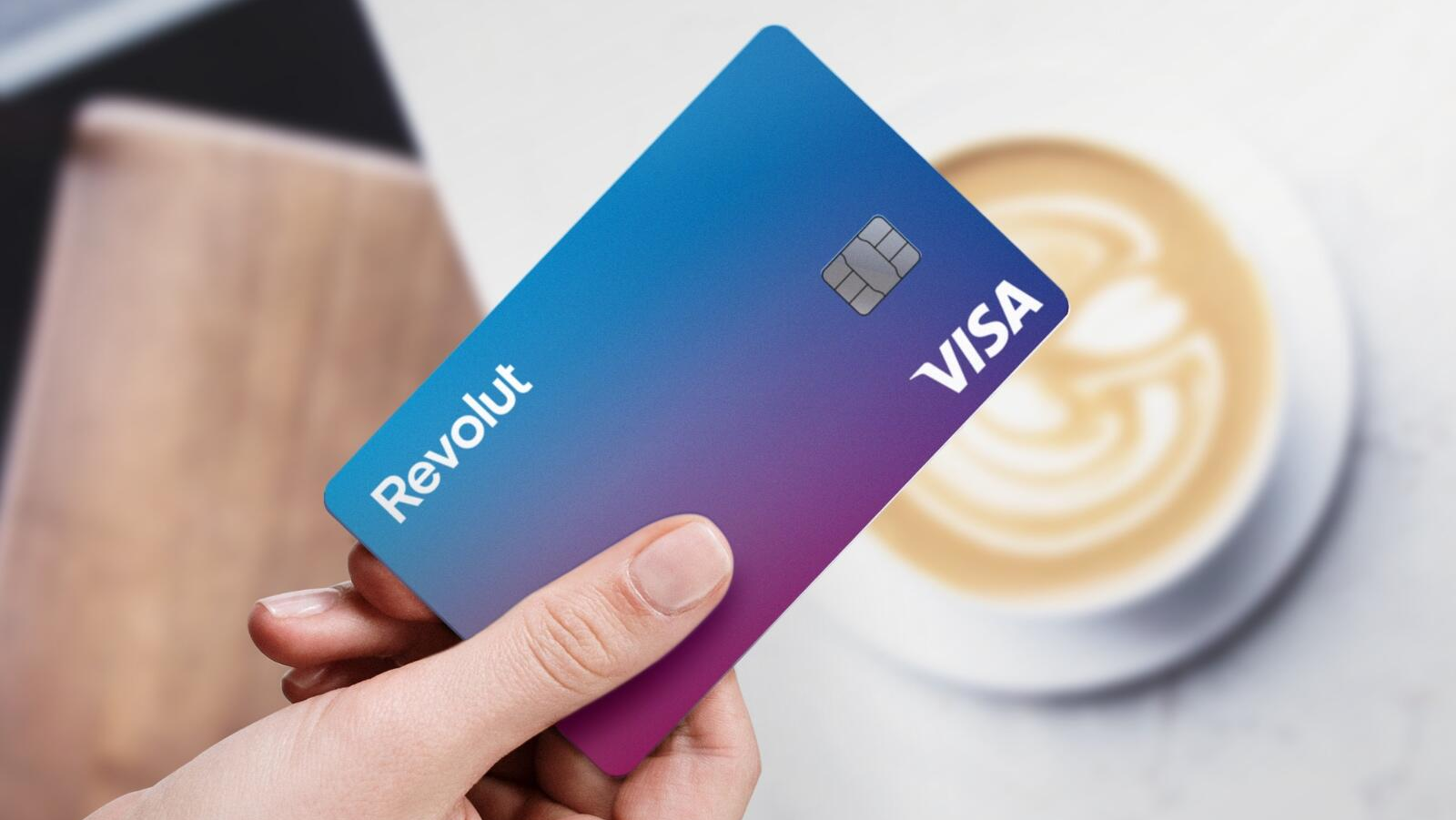
Let’s take a closer look at Revolut specifically, examining how it performs for travelers to Brazil and what you need to know before relying on it for your trip.
A. Specifics for Brazil
Revolut allows users to hold and exchange Brazilian Reais (BRL) within the app, making it convenient for travelers to prepare financially before even landing in Brazil. The card is available to tourists from many regions, including the US, UK, European Economic Area (EEA), Australia, and Canada, though the specific features and fee structures may vary slightly depending on your country of residence.
The app interface is intuitive, allowing you to convert your home currency to BRL with a few taps. This can be particularly useful for budgeting your trip, as you can pre-load exactly how much you plan to spend and watch your balance in real-time.
B. Fees and Exchange Rates
Revolut’s fee structure varies based on your subscription plan (Standard/free, Plus, Premium, or Metal) and your country of residence. Here’s a general overview, though you should always check the current terms for your specific account:
- Currency Exchange: Revolut typically offers exchanges at the interbank rate (the real mid-market rate) with no markup during standard forex market hours on weekdays. However, on weekends, they often add a small markup (around 0.5-1.0%) to protect against currency fluctuations when markets are closed. There’s also usually a monthly fair usage limit for fee-free exchanges (e.g., £1,000 or equivalent for Standard plans), after which a small fee (around 0.5%) applies.
- ATM Withdrawals: Most Revolut plans offer a monthly allowance of free ATM withdrawals abroad (e.g., up to £200/month and maximum 5 withdrawals for Standard UK plans). Beyond this limit, fees typically range from 1-2% of the withdrawal amount. Remember that this is separate from any fees the Brazilian ATM operator might charge.
- Card Payments: Generally free for in-store and online purchases, though subject to the weekend exchange rate markup if applicable.
It’s worth noting that Revolut’s Premium and Metal plans offer higher limits for free ATM withdrawals and unlimited foreign exchange at the interbank rate, which might be worth considering if you’re planning an extended stay in Brazil or frequent international travel.
C. Pros & Cons for Brazil Travel
Pros of Using Revolut in Brazil:
- Competitive Exchange Rates: Generally better than traditional banks, especially on weekdays.
- App Features: Real-time notifications, ability to freeze/unfreeze your card, spending analytics, and budgeting tools.
- Multi-Currency: Useful if your Brazil trip is part of a larger South American journey involving different currencies.
- Security: Location-based security, ability to disable contactless/online payments, and virtual cards for online purchases.
- Top-Up Flexibility: Easy to add funds to your account from your main bank account.
Cons of Using Revolut in Brazil:
- ATM Withdrawal Limits: The free withdrawal allowance might be restrictive for longer trips or cash-heavy destinations.
- Weekend Exchange Rate Markup: Less favorable rates if you’re exchanging currency or making purchases on weekends.
- App Dependency: Requires internet access for optimal functionality.
- Customer Support: Some users report challenges with reaching customer service quickly if issues arise during travel.
- Local ATM Fees: While not Revolut’s fault, the fees charged by Brazilian ATM operators can add up.
Deep Dive: Wise (formerly TransferWise) in Brazil

Now, let’s examine Wise, another popular travel money card option, and how it performs specifically in the Brazilian context.
A. Specifics for Brazil
Like Revolut, Wise allows users to hold Brazilian Reais in their multi-currency account and spend directly in BRL while in Brazil. The Wise card is available to residents of many countries, including the US, UK, most of Europe, Australia, and Canada. The card operates on the Mastercard network, ensuring wide acceptance across Brazil in establishments that take card payments.
One of Wise’s distinguishing features is its transparency about fees and exchange rates. The app clearly shows the exact mid-market rate and any fees before you make a conversion, which can help with budgeting and avoiding surprises.
B. Fees and Exchange Rates
Wise’s approach to fees differs somewhat from Revolut’s subscription-based model. Here’s what you can generally expect:
- Currency Exchange: Wise consistently uses the mid-market exchange rate (the real rate you see on Google) with a small, transparent conversion fee that varies by currency pair. For converting to BRL, this fee typically ranges from 0.45% to 1.5% of the amount converted. Unlike some competitors, Wise doesn’t add weekend markups to the exchange rate.
- ATM Withdrawals: Wise typically allows a certain amount of free ATM withdrawals per month (e.g., up to £200 or equivalent with a maximum of 2 withdrawals for UK accounts). Beyond this limit, there’s usually a flat fee plus a percentage of the withdrawal amount (around 1.75% at the time of writing). Again, this doesn’t include any fees the Brazilian ATM operator might charge.
- Card Payments: Generally free for in-store and online purchases in the local currency (BRL).
Wise doesn’t offer tiered subscription plans like Revolut, which means you get the same features regardless of how much you use the service. This can be simpler to understand but might be less cost-effective for very frequent travelers who could benefit from premium subscription perks.
C. Pros & Cons for Brazil Travel
Pros of Using Wise in Brazil:
- Transparent Fees: Clear upfront about all costs, with no hidden charges.
- Consistent Exchange Rates: No weekend markups, so the day of the week doesn’t affect your rate.
- Mid-Market Rate: You get the real exchange rate that banks use between themselves.
- No Subscription Required: All features available without monthly fees.
- App Features: User-friendly interface with real-time notifications and security controls.
Cons of Using Wise in Brazil:
- ATM Withdrawal Limits: The free withdrawal allowance might be restrictive, especially for longer stays.
- Conversion Fee: While transparent, the fee for converting to BRL is still an expense to consider.
- App Dependency: Like Revolut, optimal functionality requires internet access.
- No Cash Deposits: Unlike some traditional banks, you can’t deposit cash directly.
- Local ATM Fees: Brazilian ATM operators may still charge their own fees.
Travel Money Cards vs. Other Options for Brazil
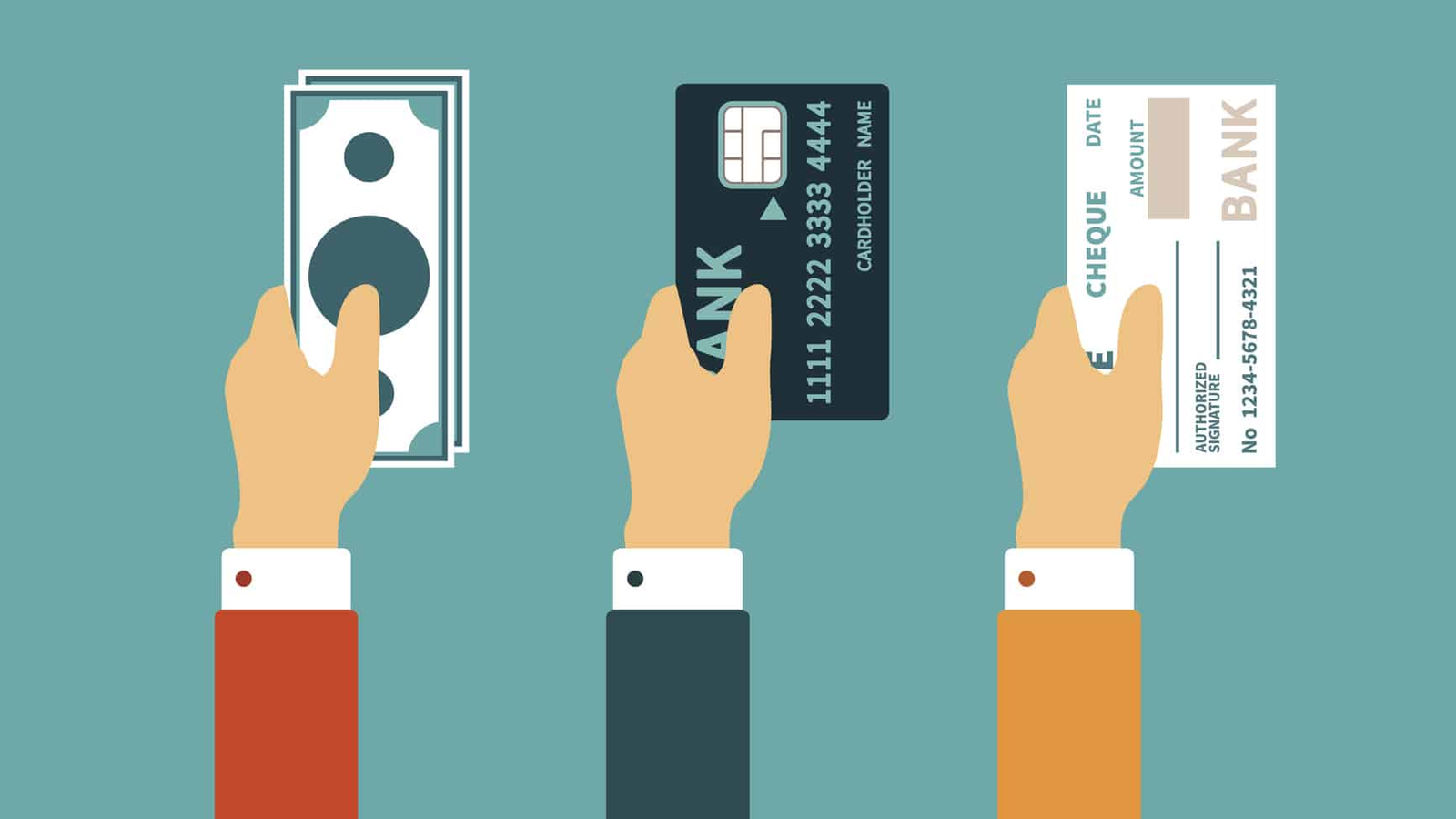
To provide a complete picture, let’s compare travel money cards in Brazil like Revolut and Wise with other common payment methods for travelers to Brazil.
A. Traditional Credit Cards
Pros:
- Wide Acceptance: Major credit cards (Visa, Mastercard) are widely accepted in Brazilian cities and tourist areas.
- Purchase Protection: Many credit cards offer fraud protection, purchase insurance, and the ability to dispute charges.
- Rewards: Potential to earn points, miles, or cashback on your travel spending.
- No Pre-Loading Required: No need to transfer funds in advance.
Cons:
- Foreign Transaction Fees: Many credit cards charge 2-3% on all foreign transactions, though some travel-oriented cards waive these fees.
- ATM Cash Advances: Using a credit card for cash withdrawals typically incurs high fees (often 3-5%) and immediate interest charges.
- Exchange Rate Markups: Credit card networks often add their own markup to the exchange rate, which can be less favorable than what travel money cards offer.
- Debt Risk: Potential to overspend and accumulate debt if not carefully managed.
B. Traditional Debit Cards
Pros:
- Direct Bank Access: Withdraws directly from your checking account.
- Spending Limit: Can only spend what you have, reducing overspending risk.
- ATM Access: Generally can be used at ATMs displaying your card network logo.
Cons:
- High Foreign Transaction Fees: Many traditional bank debit cards charge 2-3% on foreign transactions.
- ATM Fees: Foreign ATM withdrawal fees can be substantial (often $5+ per withdrawal plus a percentage).
- Less Favorable Exchange Rates: Banks typically add significant markups to the exchange rate.
- Security Concerns: Direct link to your main bank account can be a security risk if the card is compromised.
C. Carrying Cash (USD/EUR/GBP to BRL)
Pros:
- Universal Acceptance: Cash is accepted everywhere, including small vendors, markets, and remote areas.
- No Technical Issues: No dependency on card machines, internet, or banking systems.
- No Transaction Fees: Once exchanged, there are no additional fees for using cash.
- Exchange Control: Ability to shop around for the best exchange rates at different exchange bureaus (casas de câmbio).
Cons:
- Security Risk: Carrying large amounts of cash makes you vulnerable to theft or loss.
- Exchange Hassle: Finding reputable exchange bureaus with good rates can be time-consuming.
- Airport/Hotel Rates: Exchanging at airports or hotels typically offers poor rates.
- Leftover Currency: You might end up with unused BRL at the end of your trip.
D. Using Local Brazilian Payment Methods
While not directly accessible to most short-term tourists, it’s worth understanding the local payment landscape in Brazil:
- Pix: Brazil’s instant payment system has become ubiquitous among locals. It allows instant, free transfers between Brazilian bank accounts using QR codes or keys. While tourists generally can’t access Pix directly without a Brazilian bank account, you might encounter vendors preferring it. Some digital banks catering to expatriates are beginning to offer Pix access to foreigners, but this is still not widely available to tourists.
- Brazilian Bank Accounts: For longer stays, some visitors open local bank accounts, but this typically requires a CPF (Brazilian ID) and proof of address, making it impractical for most tourists.
| Feature | Revolut | Wise | Traditional Credit Card | Traditional Debit Card | Cash |
|---|---|---|---|---|---|
| Exchange Rate | Interbank rate (weekday) +0.5-1% (weekend) | Mid-market rate | Bank rate + 2-3% typically | Bank rate + 2-3% typically | Varies by exchange bureau |
| Foreign Transaction Fee | None (within limits) | None | 0-3% (varies by card) | 1-3% typically | One-time exchange fee |
| ATM Fee | Free up to monthly limit, then 1-2% | Free up to monthly limit, then flat fee + % | 3-5% + interest (cash advance) | $3-5 + % typically | N/A |
| Acceptance in Brazil | Good (Visa/Mastercard network) | Good (Mastercard network) | Very good (major networks) | Good (major networks) | Universal |
| Security Features | High (app controls, freezing) | High (app controls, freezing) | Good (fraud protection) | Moderate | Low (physical risk) |
Practical Tips for Using Travel Money Cards in Brazil
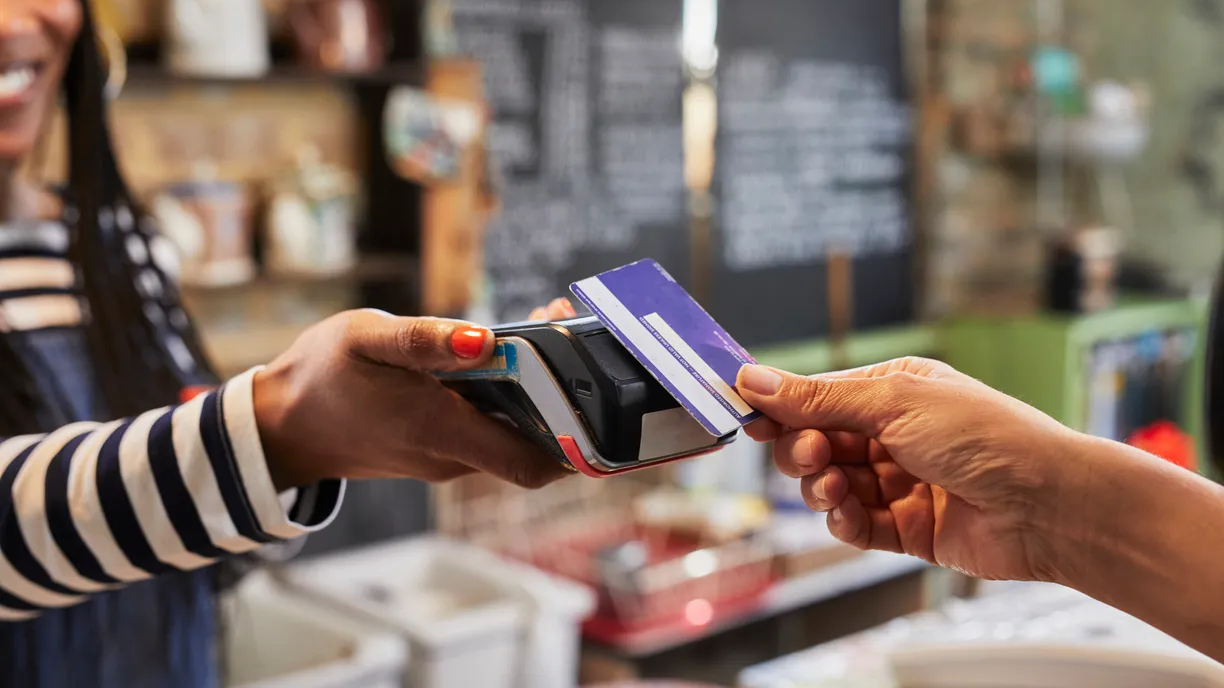
If you’ve decided to use a travel money card like Revolut or Wise for your Brazilian adventure, here are some practical tips to ensure a smooth experience:
Before You Go
- Order Well in Advance: Apply for your card at least 2-3 weeks before your trip to ensure it arrives in time. Physical card delivery can sometimes take longer than expected.
- Download and Set Up the App: Familiarize yourself with the app interface, security features, and how to top up your account before you leave.
- Load Your Card: Convert some of your home currency to BRL before your trip. This ensures you have Brazilian Reais ready to spend as soon as you land, without worrying about finding an ATM immediately.
- Check Your Plan’s Specific Limits and Fees: Understand exactly what ATM withdrawal limits, currency exchange limits, and potential fees apply to your specific account type.
- Notify Your Provider: While less critical than with traditional banks, it can still be helpful to inform your card provider of your travel dates to Brazil to prevent any security flags on your account.
- Have a Backup Payment Method: Never rely solely on one payment method. Bring a traditional credit/debit card and some cash as backups.
- Download Offline Maps and Translation Apps: These can be invaluable for finding ATMs or explaining payment issues if you don’t speak Portuguese.
While in Brazil
- Always Choose Local Currency (BRL): When making payments or ATM withdrawals, always select to be charged in Brazilian Reais, not your home currency, to avoid poor exchange rates through Dynamic Currency Conversion (DCC).
- Use “Crédito” for Card Payments: When asked “débito ou crédito?” by merchants, typically choose “crédito” (credit) for your travel money card, even though it’s technically a debit card.
- Be Strategic with ATM Withdrawals: To minimize local ATM fees, make fewer, larger withdrawals rather than frequent small ones. However, balance this against the security risk of carrying too much cash.
- Use ATMs in Safe Locations: Stick to ATMs inside banks, shopping malls, or other secure locations, especially in major cities. Avoid standalone ATMs on the street, particularly at night.
- Monitor Your Transactions: Regularly check your app to verify all transactions and spot any unauthorized charges quickly.
- Keep Your Card Secure: Be vigilant in crowded areas, as pickpocketing can occur in tourist hotspots. Use the app’s freeze feature immediately if your card is lost or stolen.
- Have Emergency Contact Information: Save your card provider’s international customer service number and know how to report a lost or stolen card.
- Connect to Secure Wi-Fi: For managing your account, only use secure, trusted Wi-Fi networks, or use your mobile data if available.
So, Are Travel Money Cards the Right Choice for Your Brazilian Adventure?
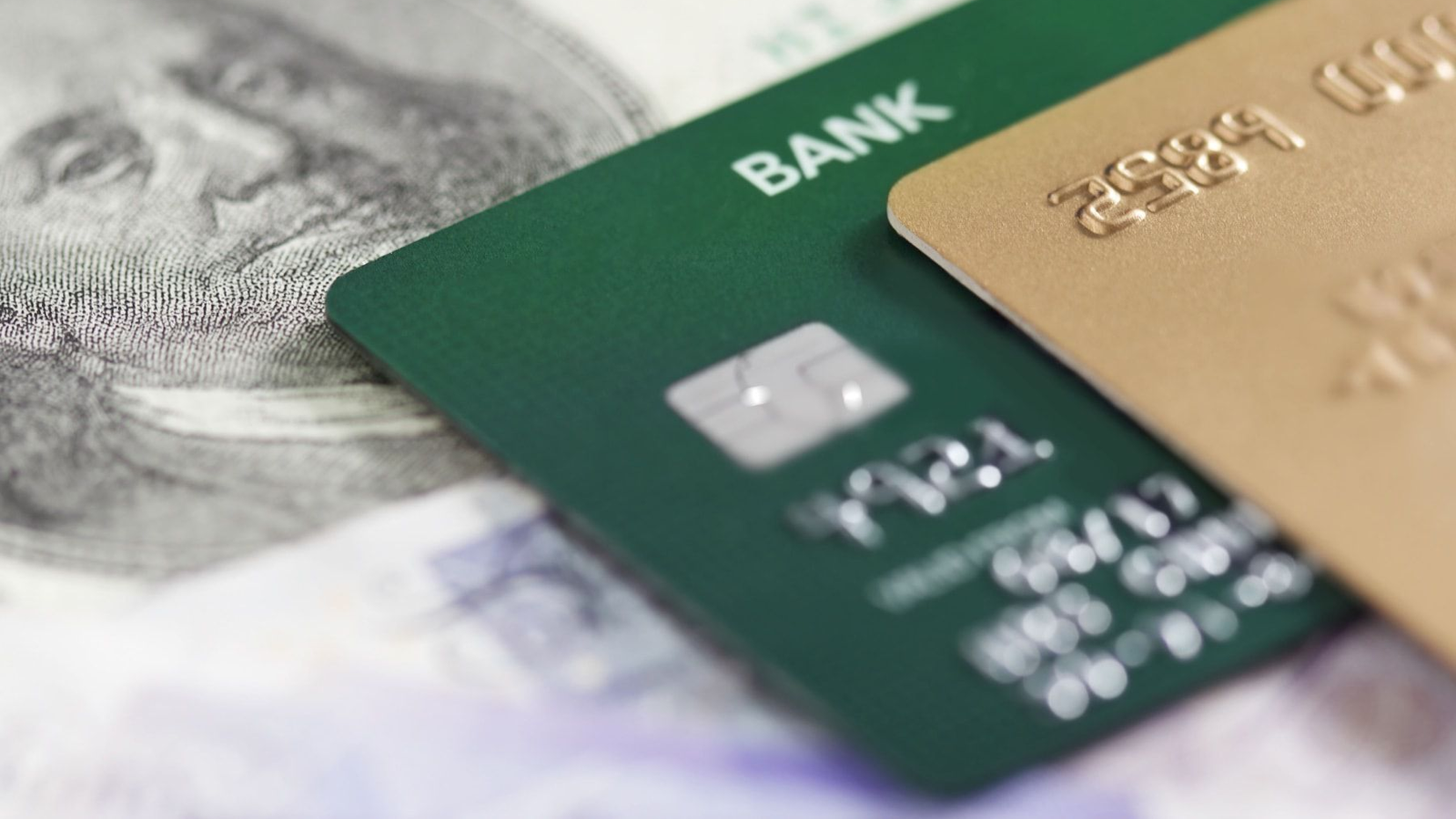
After this comprehensive exploration, we return to our original question: Are travel money cards like Revolut and Wise your best bet for Brazil in 2025? The answer, as with many aspects of travel planning, depends on your specific circumstances, preferences, and travel style.
Travel money cards in Brazil can indeed be an excellent option for many travelers, particularly if you value:
- Better Exchange Rates: Compared to traditional banks, both Revolut and Wise typically offer more favorable exchange rates, potentially saving you significant money on currency conversion, especially for larger amounts.
- Fee Transparency: Understanding exactly what you’re paying for currency exchange and ATM withdrawals can help you budget more effectively.
- Digital Convenience: The ability to manage your money through an app, receive instant notifications, and control security features provides peace of mind and convenience.
- Multi-Currency Flexibility: If your Brazilian journey is part of a larger South American adventure involving multiple currencies, these cards excel at handling different currencies within a single account.
However, they might not be ideal if:
- You Prefer Simplicity: If you find app-based financial management stressful or complicated, a traditional credit card with no foreign transaction fees might be simpler.
- You’re Traveling to Very Remote Areas: In places with limited internet connectivity or few ATMs, having more cash on hand might be necessary.
- You Need Frequent Cash Withdrawals: If your travel style requires regular access to cash beyond the free ATM withdrawal limits, the fees could add up.
The most prudent approach for most travelers to Brazil is to employ a diversified payment strategy:
- Primary Method: A travel money card like Revolut or Wise for day-to-day expenses and some cash withdrawals.
- Backup Card: A traditional credit card with no foreign transaction fees for larger purchases or emergencies.
- Cash Reserve: A modest amount of Brazilian Reais in cash for immediate expenses upon arrival, small vendors, and situations where cards aren’t accepted.
This combination provides flexibility, security through redundancy, and the ability to choose the most cost-effective payment method for each situation. By understanding the Brazilian payment landscape and the specific features of your chosen travel money card, you can navigate your financial needs smoothly while focusing on what really matters – experiencing the incredible diversity, culture, and natural beauty that Brazil has to offer.
Have you used Revolut, Wise, or other travel money cards in Brazil? We’d love to hear about your experiences in the comments below. Safe travels and boa viagem!
